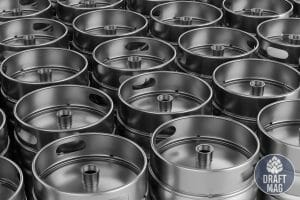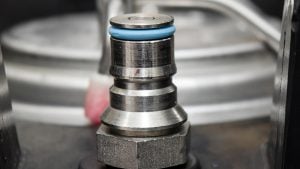Rims vs Herms: Make the Right Choice Before Investing Your Money
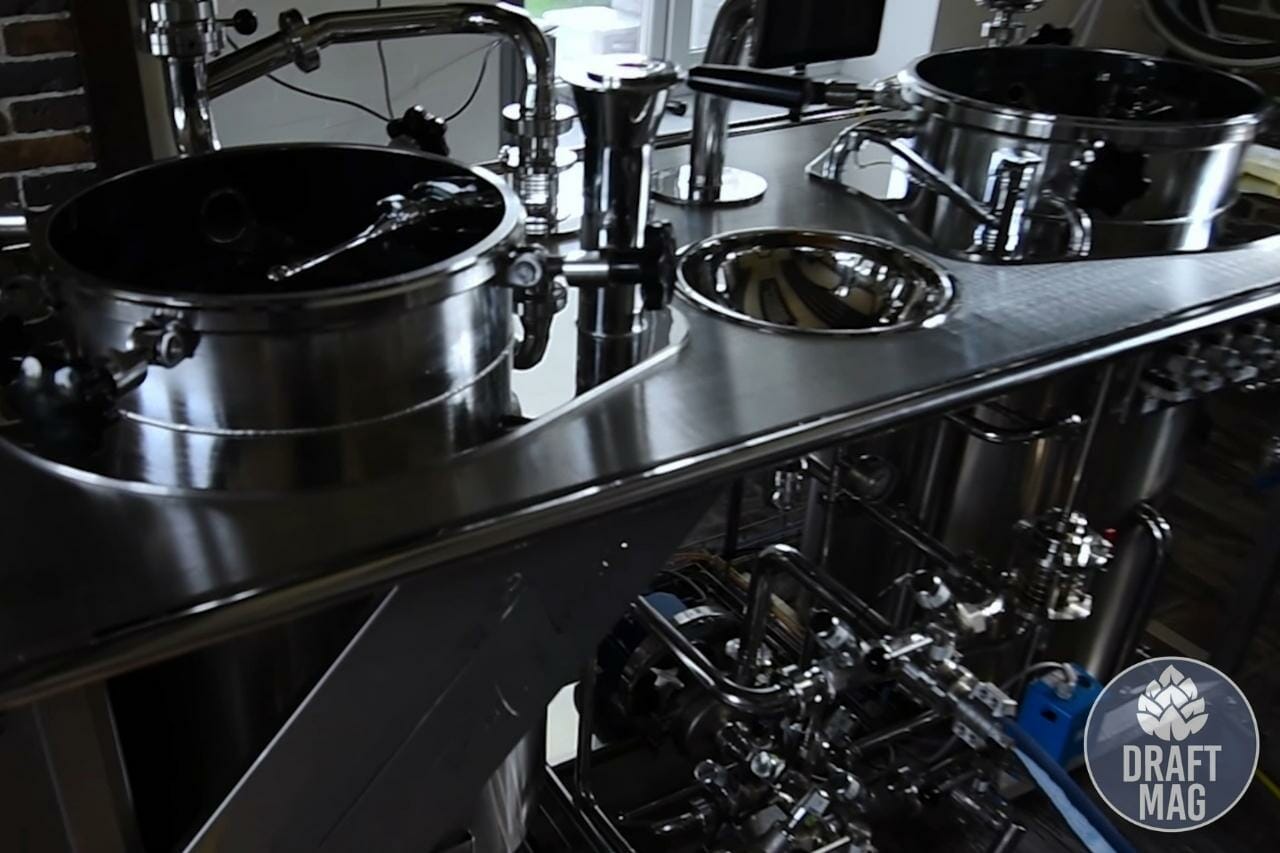 Herms vs Rims is a debate as old as time.
Herms vs Rims is a debate as old as time.
With these systems having their own advantages and disadvantages, it’s high time we take a closer look before you decide once and for all which one to buy.
In this article, we will explore the two brewing systems in depth, compare both, and help you decide whether the HERM brewing system meets your needs the best or RIMS.
Quick Overview
Here is a quick table of comparison to help you see the main differences between RIMS and HERMS.
| RIMS | HERMS | |
| How it works | The wort gets continuously pulled from the bottom of the mash/lauter tun, run through a heated tube, and then pumped back to the top of the mash. | The wort is pumped from the bottom of the mash then run through a coil of metal tubing and returned to the top, but the coil doesn’t actually have a heating element. It’s immersed in the hot-liquor tun (HLT) instead. |
| Heat | Heats up pretty fast | Maintains constant mash temperature without thermal stratification |
| Maintenance | High Maintenance | Low Maintenance |
What Are the Differences Between Rims vs Herms?
The main difference between RIMS and HERMS is that HERMS is much easier to maintain than RIMS, but RIMS systems do pack some features that HERM systems don’t.
Excellent beer is made with all sorts of systems. It all comes down to which brewing setup meets your criteria the most.
Find Out if There Are Any Deal-breakers for You
While both systems have their strengths and weaknesses, you have to keep some critical flaws in mind.
If you are going to be:
- Brewing recipes that might be ruined with the enzymes being somewhat less effective
- Forgetting about monitoring the wort sometimes
- Not okay with the tedious cleaning process
It would be best if you didn’t go for a RIMS system. Choose HERMS instead.
If you’re going to be:
- Needing a portable setup
- Step mashing
- Very glad about faster heating times
Then you should go for RIMS, which would suit you the best.
Decide Whether You Want a High-maintenance Brewing System or a Low-maintenance One
As we’ve read above, HERMS is much easier to maintain than RIMS, but RIMS systems do pack some features that HERM systems don’t.
The question is, are the strengths of RIMS systems something absolutely critical for your brewing process?
If they’re not, then it makes much more sense to go for a HERM brewing system instead.
Now that you know about both the good and bad sides of the two brewing systems, you will be able to choose what fits you best. Just make sure to keep the things mentioned above in mind.
Cost
HERMS and RIMS systems are quite expensive. Buying a complete setup with a capacity of only 10 gallons will run you about 5-10 thousand bucks, and the bigger ones come with even heftier price tags.
The DIY route is comparatively cheaper, but provided how complex HERMS and RIMS tend to be, you need to have extensive knowledge about welding and building stuff in general.
If you’re going to brew a lot of beer at home, then getting one of the brewing systems despite the price tag will be a good investment. However, you don’t need a HERMS or a RIMS system if you simply want to make your own beer at a low cost. The expenses associated with those systems will be a lot more than what quality beer would cost you otherwise.
HERMS and RIMS are geared more for people who love to brew and tinker with its process. For those who just want to have a good beer now and then, canned and bottled beers are affordable and convenient options to go for.
Cleaning
RIMS and HERMS are not easy to clean. However, with a little patience, effort and practice, it’s entirely possible to go through the entire cleaning process of your HERMS and RIMS. They’re just somewhat complex systems with a lot of parts, so as long as you have enough time on your hands, it shouldn’t be that hard.
What Makes Rims So Good?
Rims is a good choice because the wort gets filtered through the grain bed in each cycle, which results in maximum clarity. The chances of hot spots occurring in the grain bed also reduce significantly, making the wort even more transparent.
RIMS Brewing System
RIMS is the short form of Recirculating Infusion Mash System. Let’s take a look at how it works.
When using RIMS brewing systems, the wort gets continuously pulled from the bottom of the mash/lauter tun, run through a heated tube, and then pumped back to the top of the mash. As the name suggests, the wort is repeatedly circulated through the system this way.
Some brewers use a temperature probe to measure the heating element temperature to make sure the beer comes out perfect each and every time. If propane is expensive in your area, an electric RIMS brewing system can help save costs and works just as well.
Reasons To Choose Rims
On top of that, RIMS allows us to maintain an even temperature throughout the mash. Since there is already a heat source in the tube, we don’t even need an insulated mash tun.
And last but not least, increasing the mash temperature is simply a piece of cake with RIMS!
- Heats up pretty fast, which may be helpful for some recipes.
- Easier to set up and move because of the low water volume. It can be made portable as well.
Reasons to Not Choose Rims
- The fast heating process may reduce the effectiveness of some enzymes that are crucial to mash processing.
- The pump needs to be monitored constantly to ensure the wort doesn’t start boiling.
- High maintenance — takes more time to clean than HERMS.
Building Your Own DIY RIMS System
If you’re dedicated and have a certain purpose with brewing or just enjoy the brewing process altogether, then it’s definitely worth investing and putting your effort into building your own DIY RIMS system.
While building a RIMS brew system is far from a straightforward process, it’s not impossible either. As long as you have a good grasp of basic mechanical skills like using hand and power tools and welding, it’s possible to build your own system at home.
Many people have built their own systems and published tutorials online, which would be an excellent place to start for you. Provided how complicated these systems tend to be, make sure to pick an easy design if you’re a total beginner.
Not to mention that you will also have the flexibility to add your own features and customize the specifications to your liking in a DIY build.
What Makes HERMS So Good?
HERMS is a good choice because the wort is also recirculated in this system, but in a HERMS brewery, the wort is also pumped from the bottom of the mash.
It is then run through a coil of metal tubing and returned to the top, but unlike RIMS, the coil doesn’t actually have a heating element. It’s immersed in the hot-liquor tun (HLT) instead.
HERMS Brewing System
HERMS stands for Heat Exchange Recirculating Mash System. So when using RIMS, the tube heats up, increasing the temperature of the wort as well. This is where their difference lies. In a HERM system, the tube isn’t heated, instead, it’s submerged in a heated hot-liquor tun so the tube can get heated passively. The HLT is essentially a container where the brewing water is heated to the temperature of the mash.
We don’t control the mash temperature by controlling the temperature of the HLT. Instead, we just turn the pump on to increase the temperature and turn it off to decrease the temperature. The temperature can be maintained easily by cycling the pump with the help of an electronic controller.
Now let’s move on to the pros and cons.
Advantages
- Set and forget – maintaining the temperature is extremely easy once it is calibrated.
- The heating process is so smooth that it’s almost impossible to scorch your grain or wort.
- It maintains constant mash temperature without thermal stratification.
- The mash temperature can be raised without increasing the water to grain ratio.
The Disadvantages To Look Out For
- The sparge water needs to be heated first, resulting in energy loss.
- It is not useful for step-mashing.
Brew Sculpture
Brew sculpture is a structural component to hold the brew vessel and support all accessories (including burners, plumbing, pumps, chillers, etc.) used in the system. If you’re interested in setting up an advanced homebrew system, then you must get to know a bit about brew sculptures and their significance in brewing.
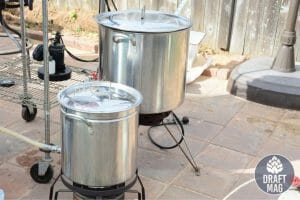 Brew sculptures make the brewing process easier for home brewers. It also allows the brewer to easily manage the sophisticated process of homebrewing.
Brew sculptures make the brewing process easier for home brewers. It also allows the brewer to easily manage the sophisticated process of homebrewing.
There are mainly three different kinds of brew sculptures you should know about:
- Single-tier RIMS-HERMS brew sculpture
- Two-tier RIMS-HERMS brew sculpture
- Three-tier RIMS-HERMS brew sculpture
The burners are all three designs attached to the frame, and this is a common trait that you will find across all three types of sculptures. Choosing from one of the three brewing sculptures greatly depends on how you would like to brew, how much you can spend on the components, and how much of a complicated process you can handle.
Three Types of Brew Sculptures
Let’s get to know what each type of brew sculpture includes and what you should expect.
– The Single-tier Brew Sculpture
As one of the most common brew sculptures among all three types, this popular sculpture offers an aesthetic appearance. All the vessels are placed uniformly on the same level and height. The low height of the vessels allows the brewer to easily monitor or check them from time to time.
The vessels are usually of stainless-steel containers and short in size. Another benefit of the single-tier brew sculpture is that no ladder is required when the brewer needs to mix the contents in the vessels. However, the Single-Tier Brew Sculpture requires a large space for setup, unlike the other options, and is also on the expensive side.
– Two-tier RIMS-HERMS Brew Sculpture
If you don’t want a very tall brew sculpture, the Two-Tier RIMS-HERMS Brew Sculpture may be the best option for you. With the help of gravity, liquid contents can easily be transferred to one of the three vessels, but the vessel placed on top will require a pump to receive liquid.
One is placed on top of the other among the three stain-steel vessels, while the third is placed at a slightly-leveraged platform.
– Three-tier RIMS-HERMS Brew Sculpture
Finally, the tallest brew sculpture of all is the Three-tier RIMS-HERMS Brew Sculpture. The three vessels are placed at different height levels in a three-tier sculpture.
Gravity plays an essential role in this type of brew sculpture to transfer the liquid content from one vessel to another. Unfortunately, the brewer will need a ladder to reach the top vessel for mixing purposes.
The best thing about this brew sculpture is that it can be used even without electricity. It also does not require much pumping and is more affordable to build than other brew sculptures.
There are two popular styles of three-tier brew sculpture, the Three-level Step Design and the Brew Tree. The Three-level Step Design allows brewers to place the vessels in as many forms as they like, while for the Brew Tree, all three vessels are mounted off a straight pole.
The problem with tall brewing sculptures is their height, which sometimes requires the brewer to place it in an open space or a large room with a high ceiling. Being aware of these requirements will help you choose the perfect brew sculpture for homebrewing and avoid ending up with something that you will have a hard time managing or using.
The Bottom Line
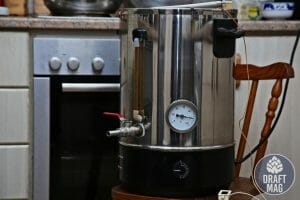 Let’s take a quick look at what we’ve learned in the article so far. In the beginning, we’ve discussed the technical aspects of both RIMS and HERMS, their pros and cons, along with the core differences between them. It would be much easier for you to decide if you know the ins and outs of both kinds of systems.
Let’s take a quick look at what we’ve learned in the article so far. In the beginning, we’ve discussed the technical aspects of both RIMS and HERMS, their pros and cons, along with the core differences between them. It would be much easier for you to decide if you know the ins and outs of both kinds of systems.
We’ve also discussed all the deciding factors you need to consider before purchasing one or the other.
When it comes to brewing sculptures, you can choose between the three different tiers, each with its own advantages and drawbacks, if you’re looking for a proper home brewing setup.
As comprehensive as it was, we hope this article will help you understand the strengths and weaknesses of both HERMS and RIMS systems and pick the perfect one for yourself. Happy brewing!

